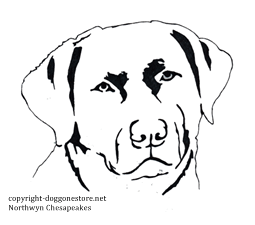|
Fleas
spend most of their life cycle in your pet’s environment, rather than
on the animal. They live in
cracks and crevices of floors and walls, in grass, bushes, abandoned
logs, your pet’s bedding and in the carpet.
The young flea (larva) is able to feed on the feces of the adult
flea, so it doesn't bother your pet.
The adult flea jumps onto your dog or cat to feed.
It feeds by biting your animal, depositing flea saliva, which
increases blood flow, and then withdraws a tiny amount of blood out of
your animal’s circulation.
A
flea can breed and lay its eggs on your pet.
Once the adult flea has had its meal and/or laid its eggs, it
quickly jumps off your pet and into the surrounding environment.
Fleas spend only a small part of their life cycle on the animal.
Even a few fleas biting your dog can cause him to scratch, so you
may not see fleas on your pet the entire time that he’s affected by
them. You probably see flea
feces and eggs in your pet’s fur when you brush him.
Flea feces are black or reddish-black, about the size of a
pinhead. Flea eggs are
whiteish and look like a grain of sugar or salt.
They can be easily confused with dandruff or flakes of dead skin
brushed out with the fur. In
most animals, the flea saliva induces an immediate skin irritation that
causes the animal to stop and scratch where he was bitten.
In cases where the “skin irritation’ develops into a
full-blown allergic reaction to the flea saliva, crusty, reddened
papules (swellings) appear in the animal’s skin and the itching
becomes extremely intense. Frantic
licking and biting often breaks the skin.
This, in turn, makes it easier for bacteria to invade the skin.
The itching bald spots are located on the dog’s rump, lower
back and abdomen, inner thigh, feet and neck.
Medication can be prescribed to relieve the severe itching and to
prevent the spread of secondary bacterial infections.
The problem will remain as long as fleas are present in your
pet’s environment. Flea
control is constant and difficult.
A single female can lay hundreds of eggs during her 6 mo-2 yr
life span. A hard winter
frost can kill fleas living outdoors, but fleas that have moved inside
can survive all-year long. The
assault on fleas must be repeated and long-term in order to kill the
newly hatched fleas that survived previous “anti-flea” applications.
Indoor
flea control
Use flea sprays and either “foggers” or a professional
exterminator. Since none of
these measures eliminate the flea egg and new generations are being
hatched every 10-14 days, it is very important to repeat treatment of
the entire house or kennel every two weeks and "de-flea" the
pet at the same time. Vacuuming
frequently is helpful. Sprinkling
flea powder onto the carpets and cushions and later vacuuming it up,
putting a fresh piece of cut-up flea collar into the vacuum cleaner bag.
Change the bag frequently so there is no “flea nursery.”
Wash and/or replace the pet’s bedding.
Some house sprays can be put on bedding but make sure they are
safe to use around pets and humans.
A fogger that works well is X-O-TROL by Lambert Kay.
Outdoor
flea control
Use insecticide sprays, professional or do-it-yourself garden-hose kind
as needed (2-4 weeks. Keep your grass cut short, discard dead logs where
fleas hide and (the hard part) keep other dogs/cats, which may have
fleas, out of your yard.
On-the-pet
fleas
One of the best ways to control fleas is with Frontline Spray. You can
get the spray from your vet or order online. Sometimes fleas get out of
hand and then bath him with a pyrethrin based flea shampoo.
Then once a month use Frontline Spray to contain Flea
infestation. Each flea
product has its own advantage or disadvantage in ease of application,
efficiency, safety to the animal and safety to the people touching him.
Don't get it into the pet’s eyes.
Frequency of application varies with the product used, so follow
directions carefully. Preventic flea
collars can be used after your pet no longer has fleas.
It can kill an occasional flea that wanders within 4-6 inches of
the collar but it is of little-to-no value against an
already-established population of fleas.
(I don’t suggest using
flea collars either - too many small children grab them, get the poison
on their hands, themselves and into their mouths) Most are not that
efficient. Never use a flea
collar at the same time as using a spray, powder, or dip on your dog.
Too much poison at one time is not good.
Always
consult with your Veterinarian for treatment or before treating your dog
with any medication |

